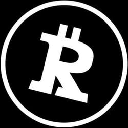 |
|
 |
|
 |
|
 |
|
 |
|
 |
|
 |
|
 |
|
 |
|
 |
|
 |
|
 |
|
 |
|
 |
|
 |
|
Cryptocurrency News Articles
Etherealize Aims to Bring ETH to Wall Street Amid Ethereum's Identity Crisis
Feb 05, 2025 at 01:30 am
Its native token, ether (ETH), is underperforming against competitors, and longtime builders are beginning to question whether the chain's technology is falling behind

Former banker Vivek Raman founded Etherealize to bridge the gap between traditional finance and Ethereum, positioning ETH as a serious asset class.
In this interview with CoinDesk, Raman discusses his journey into crypto, how Etherealize is marketing ETH to Wall Street, the role of the Ethereum Foundation and how banks view layer-2 rollups.
This interview has been edited for brevity and clarity.
CoinDesk: You've had all this experience in traditional finance, and you call yourself a newcomer to the Ethereum world. Walk me through how you got into crypto, what was that moment?
Raman: I was a trader at four banks, trading the most archaic, esoteric products — high-yield bonds, distressed bonds, leveraged loans and credit default swaps and stuff. These are all the backbone of the economy, but I saw how inefficient they are.
When you watch the movie Wall Street, and you see everything traded on the phone, you're like, “Oh, maybe the system's upgraded,” But it hasn't. It still trades like that.
I saw that for 10 years. I lived it. And I'm very lucky because I built a really good network, I have all these amazing mentors, all these people that ran banks and ran desks.
But after 10 years, the technological pace of Wall Street was not evolving at all, and I was like, "Let me find something else."
Right when I left Wall Street, I went to Austin, Texas, and I serendipitously met some of the Ethereum core developers on the research and development team. They were working on the Merge, and they taught me about Ethereum.
While I was on Wall Street, it was very anti-crypto because of the regulators. The "adoption moment" wasn't even close for the 10 years I was there. But when I found Ethereum, I realized that this was the answer for Wall Street.
CoinDesk: There are different components to Etherealize, right? Where does the "marketing" part come in?
Raman: So it's three interrelated things.
The first thing is that everyone uses Ethereum; Ethereum is the most-adopted smart contract platform. Bitcoiners just talk about bitcoins — probably because there's not much utility, so all you can do is talk about it.
It's almost like with Ethereum, there's so much utility that no one actually talks about the ETH asset. But the asset is very important to the ecosystem; for better or worse, people use the asset as a proxy for ecosystem health. Part of the reason why I think Solana has so much of the limelight isn't because it's necessarily the best technology; it's because the token went up a lot.
So the first thing is to talk about ether as an asset — as a portfolio diversifier, as something that's complementary to bitcoin — and to provide that content, research and marketing to ETF issuers, to the broader public and to institutions.
The second is that Ethereum is obviously a utility platform. It's this new financial internet; they call it "the operating system for the financial economy." So we teach about Ethereum as a platform and what you can do with it: You can tokenize assets. You can build layer-2 ecosystems, where banks can actually have their own networksand can customize them to bring their customers on-chain.
And then, third, we actually try to give a call to action. The call to action is to tokenize assets on Ethereum or build a layer 2 on Ethereum, and we're building a product suite to actually facilitate Wall Street trading on the Ethereum blockchain.
CoinDesk: Ethereum is experiencing an identity crisis. Its price is lagging far behind other cryptocurrencies, the Ethereum Foundation is undergoing a shake-up, and crypto community members are voicing their disagreements about Vitalik Buterin's central role in the ecosystem. Etherealize is coming to fruition at a moment when the ecosystem probably needs a marketing or advocacy arm. Is Wall Street the savior for Ethereum?
Raman: I don't think it's a silver bullet. The Ethereum Foundation shouldn't have to do everything, and Vitalik shouldn't have to do everything. Research and development — and the high-level, cutting-edge strategy and roadmap to future-proof Ethereum for the next 100 years — that's Vitalik's job.
Whose role is it to talk about these ecosystems? It's the application layer. It’s institutions like Etherealize.
The problem is that once the Overton window shifted from regulatory attacks to regulatory acceptance, the other layer-1 ecosystems, which have very centralized and centrally planned companies behind them, picked up mind share and marketing market share. But ultimately, the best of the best is Vitalik — the best of the best is the EF researchers.
I spent years developing this business plan, figuring out when the right time to strike was
Disclaimer:info@kdj.com
The information provided is not trading advice. kdj.com does not assume any responsibility for any investments made based on the information provided in this article. Cryptocurrencies are highly volatile and it is highly recommended that you invest with caution after thorough research!
If you believe that the content used on this website infringes your copyright, please contact us immediately (info@kdj.com) and we will delete it promptly.
-

-

-

- Panvel Exit on Mumbai-Pune Expressway Shut for 6 Months Starting Today
- Feb 11, 2025 at 04:38 pm
- The Panvel Exit (Km 1.200) on the Mumbai-bound lane of the Yashwantrao Chavan Mumbai-Pune Expressway has been shit for six months starting from today (February 11), due to construction work at Kalamboli Circle.
-

-

-

-

- 3 Altcoins with the Potential to Replicate Solana’s (SOL) remarkable 17,100% growth
- Feb 11, 2025 at 03:51 pm
- Searching for altcoins with the potential to replicate Solana’s (SOL) remarkable 17,100% growth? Three promising projects—Lightchain AI, TON, and Hedera (HBAR)—show potential to turn a $320 investment into $54,240 by 2025.
-

-





























































